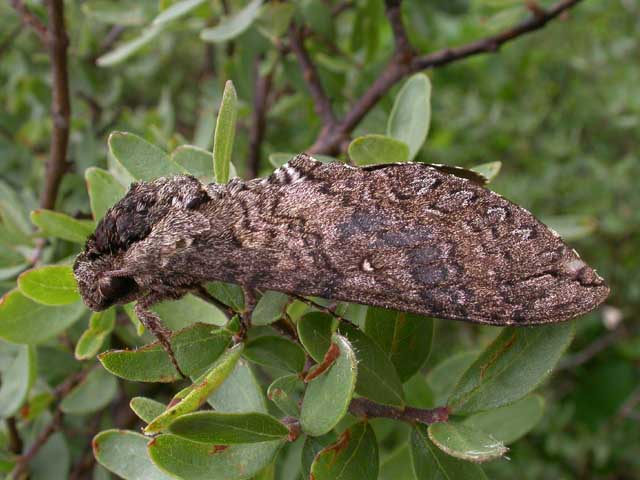
Manduca occulta, Jalisco, Mexico, July 2003, courtesy of Jean Haxaire copyright.
This site has been created by Bill Oehlke. Comments, suggestions and/or additional information are welcomed by Bill.
TAXONOMY:
Family: Sphingidae, Latreille, 1802 |
|
|
Updated as per http://biological-diversity.info/sphingidae.htm (Belize), November 2007 Updated as per Fauna Entomologica De Nicarauga, November 2007 Updated as per The Known Sphingidae of Costa Rica, November 2007 Updated as per personal communication with Evan Rand: Arizona Sphingidae: Santa Cruz County (July-August); September 2010 Updated as per personal communication with Terry Stoddard (El Progresso, Guatemala, June 2015, 103mm); August 19, 2015 Updated as per personal comunication with Gernot Kunz (Rincon de la Vieja Lodge, Guanacaste, Costa Rica, June 10, 2008, 624m); March 24, 2017 Updated as per personal comunication with Galerita Janus (Mount Totumas, Chiriqui, Panama, July 16, 2016, 1880m); March 17, 2020 |

This site has been created by Bill Oehlke. Comments, suggestions and/or additional information are welcomed by Bill.
TAXONOMY:
Family: Sphingidae, Latreille, 1802 |
The specimen type locality is Vera Cruz, Mexico.
Manduca occulta can be differentiated from M. sexta which has 2/3 black, 1/3 white checkering on the forewing, while occulta has equal amounts of black and white checkering.
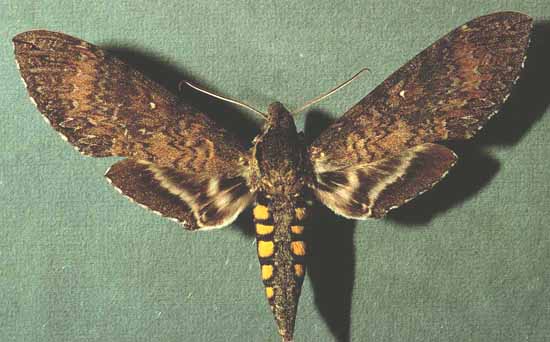
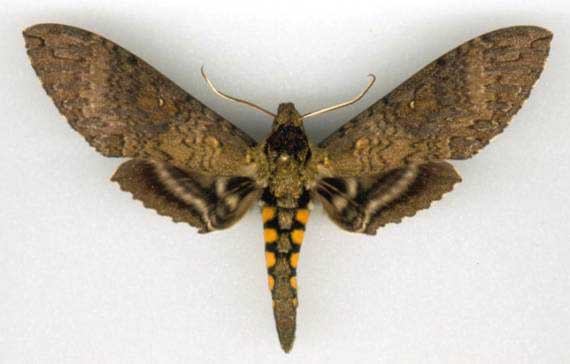
Manduca occulta, Nicaragua, courtesy of Michel Laguerre, id by Jean Haxaire.
Galerita Janus reports a July flight in Panama.
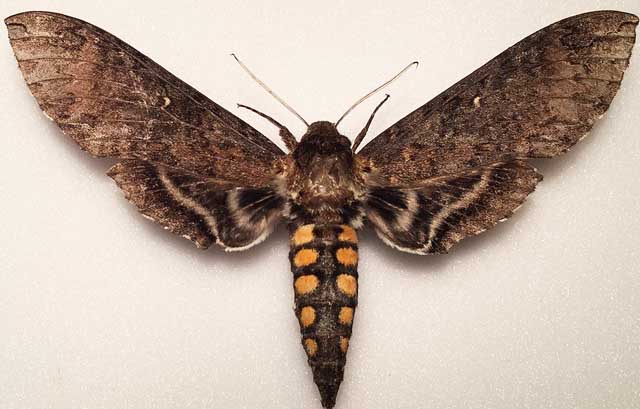
Manduca occulta, 117mm, Mount Totumas, Chiriqui, Panama,
July 16, 2016, 1880m, courtesy of Galerita Janus, id by Bill Oehlke.
Evan Rand reports them in southern Arizona: Santa Cruz county, in July and early August.
Manduca occulta, California Gulch, Atascola Mtns., Santa Cruz Co., AZ,
July 21, 2010, 3800 ft, courtesy of Evan Rand.
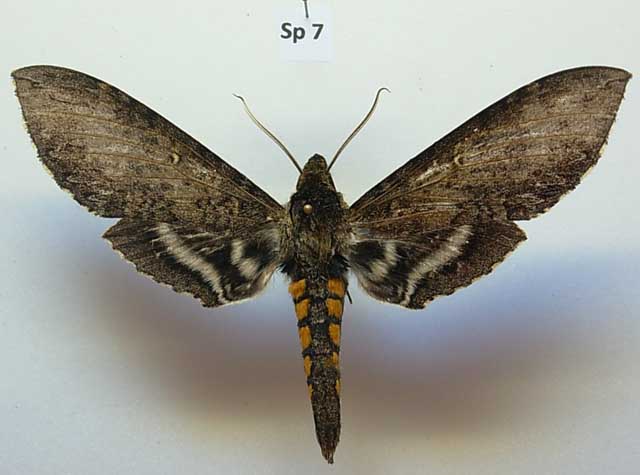
Manduca occulta Hacienda La Vega, 10km N El Rancho Jct, El Progresso, Guatemala,
June 11, 2015, 300m, 103mm, courtesy of Terry Stoddard, id by Bill Oehlke.
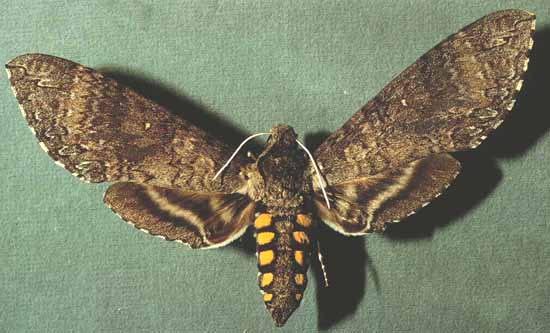
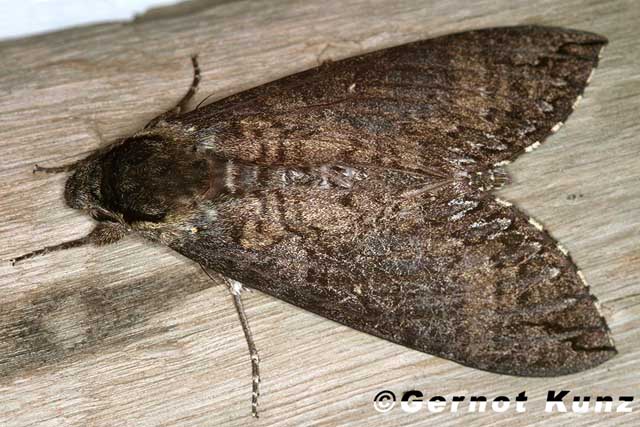
Manduca occulta male, Rincon de la Vieja Lodge, Guanacaste, Costa Rica,
June 10, 2008, 624m, courtesy of Gernot Kunz
Larvae look much like Manduca dilucida.
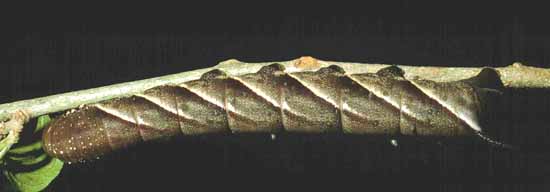
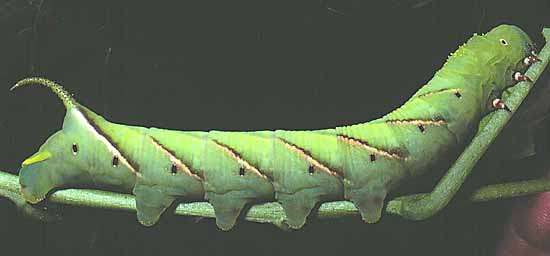

The tongue loop is long like that of a small Manduca rustica. |
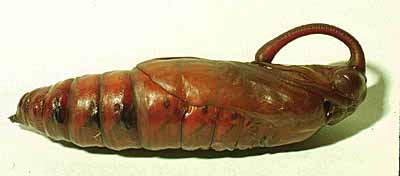 |
Larvae are subject to parasitization by Drino rhoeo and Drino piceiventris of the Tachinidae family and by Microplitis espinachi and Meteorus congregatus of the Braconidae family.
Return to Sphingidae Index
Return to Sphingini Tribe
Use your browser "Back" button to return to the previous page.
This page is brought to you by Bill Oehlke and the WLSS. Pages are on space rented from Bizland. If you would like to become a "Patron of the Sphingidae Site", contact Bill.
Please send sightings/images to Bill. I will do my best to respond to requests for identification help.
Enjoy one of nature's wonderments: Live Saturniidae (Giant Silkmoth) cocoons.
 Show appreciation for this site by clicking on flashing butterfly to the left. The link will take you to a page with links to many insect sites. |